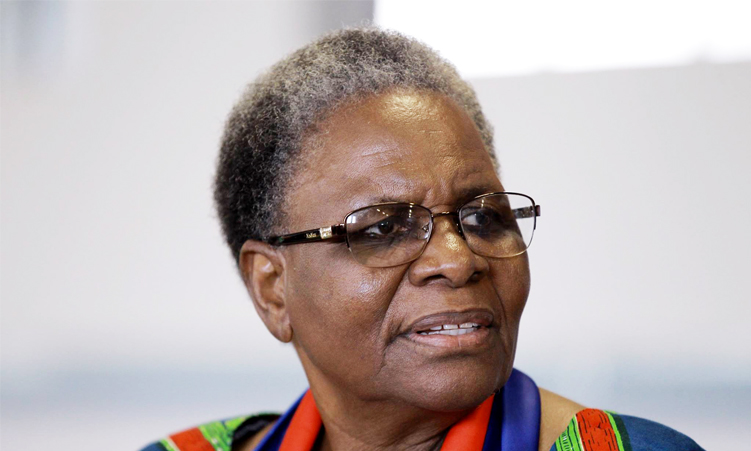NEW YORK – One out of 10 babies in the world today is born to a teenage mother, greatly increasing the risk of death to both mother and infant, the humanitarian group Save the Children said Tuesday in an annual report.
An estimated 70 000 girls aged 15-19 and over one million infants born to young mothers die each year from complications related to childbearing, the report said. “In developing countries, pregnancy and childbirth are the leading cause of death among teenage girls,” Mike Kiernan, a spokesman for Save the Children, said in an interview.Some 99 per cent of all maternal deaths occur in developing countries, he said.Girls in sub-Saharan Africa face the highest risk rates for young mothers, Kiernan said.Outside Africa, the risks are especially high in Afghanistan, Bangladesh, India, Nepal, Yemen, Guatemala, Haiti and Nicaragua.The group’s annual ‘State of the World’s Mothers’ report ranks the well-being of mothers in 119 countries, taking into account their health, education and political status.This year’s report focused on mothers who are still children or adolescents, whose bodies often are not mature enough to handle the strains of pregnancy and childbirth.While most of the study focused on girls in the developing world, it also reported on early motherhood in wealthy nations.Among industrialised nations, the United States has the largest number of teen pregnancies, followed by Russia and New Zealand.The Republic of Korea has the lowest numbers of teen births, followed by Japan and the Netherlands.The report found that education was the single biggest factor in helping girls postpone pregnancy and have healthier children.In Nigeria, for example, research showed that only seven per cent of women with seven years of schooling gave birth before age 20, compared with 43 per cent of those with no education, the report said.”The longer a girl stays in school, the less likely she is to be married young, give birth young and suffer death or disability to young pregnancy,” said Mary Beth Powers, the reproductive health adviser at Save the Children.”The longer the girl stays in school, the more likely her children are to survive.”The report’s ‘Mothers’ Index’, which ranks the top 10 and the bottom 10 countries for mothers, shows a large literacy gap between the two extremes.In Sweden, ranked the best country for mothers, more than 99 per cent of women are literate, while in Niger, ranked lowest, only nine per cent are.After education, health care is key to addressing the problems of child motherhood, the report said.It recommended tailoring health services to newly married girls and first-time mothers, with voluntary family planning as a key component.”Young married girls need access to contraception so they can delay first births until they are 20 when their bodies are more mature,” Powers said.Save the Children is part of a coalition of aid groups that will call upon the US government during the G-8 Summit in June to commit US$1 billion to global education by the year 2006, Powers said.Last year, the allocation was US$326,5 million.”We think the United States’ fair share is triple that amount,” she said.- Nampa-AP”In developing countries, pregnancy and childbirth are the leading cause of death among teenage girls,” Mike Kiernan, a spokesman for Save the Children, said in an interview.Some 99 per cent of all maternal deaths occur in developing countries, he said.Girls in sub-Saharan Africa face the highest risk rates for young mothers, Kiernan said.Outside Africa, the risks are especially high in Afghanistan, Bangladesh, India, Nepal, Yemen, Guatemala, Haiti and Nicaragua.The group’s annual ‘State of the World’s Mothers’ report ranks the well-being of mothers in 119 countries, taking into account their health, education and political status.This year’s report focused on mothers who are still children or adolescents, whose bodies often are not mature enough to handle the strains of pregnancy and childbirth.While most of the study focused on girls in the developing world, it also reported on early motherhood in wealthy nations.Among industrialised nations, the United States has the largest number of teen pregnancies, followed by Russia and New Zealand.The Republic of Korea has the lowest numbers of teen births, followed by Japan and the Netherlands.The report found that education was the single biggest factor in helping girls postpone pregnancy and have healthier children.In Nigeria, for example, research showed that only seven per cent of women with seven years of schooling gave birth before age 20, compared with 43 per cent of those with no education, the report said.”The longer a girl stays in school, the less likely she is to be married young, give birth young and suffer death or disability to young pregnancy,” said Mary Beth Powers, the reproductive health adviser at Save the Children.”The longer the girl stays in school, the more likely her children are to survive.”The report’s ‘Mothers’ Index’, which ranks the top 10 and the bottom 10 countries for mothers, shows a large literacy gap between the two extremes.In Sweden, ranked the best country for mothers, more than 99 per cent of women are literate, while in Niger, ranked lowest, only nine per cent are.After education, health care is key to addressing the problems of child motherhood, the report said.It recommended tailoring health services to newly married girls and first-time mothers, with voluntary family planning as a key component.”Young married girls need access to contraception so they can delay first births until they are 20 when their bodies are more mature,” Powers said.Save the Children is part of a coalition of aid groups that will call upon the US government during the G-8 Summit in June to commit US$1 billion to global education by the year 2006, Powers said.Last year, the allocation was US$326,5 million.”We think the United States’ fair share is triple that amount,” she said.- Nampa-AP
Stay informed with The Namibian – your source for credible journalism. Get in-depth reporting and opinions for
only N$85 a month. Invest in journalism, invest in democracy –
Subscribe Now!






